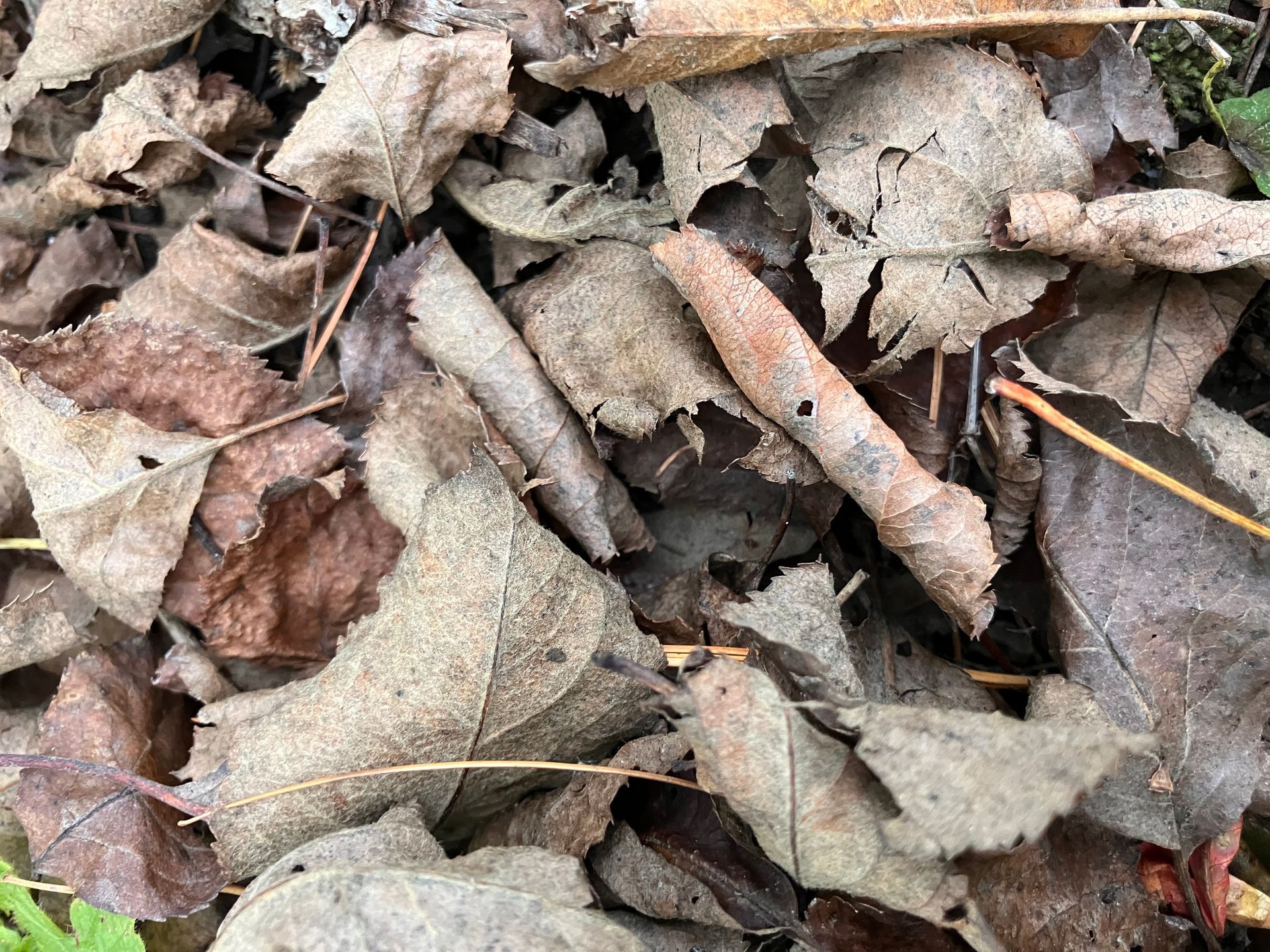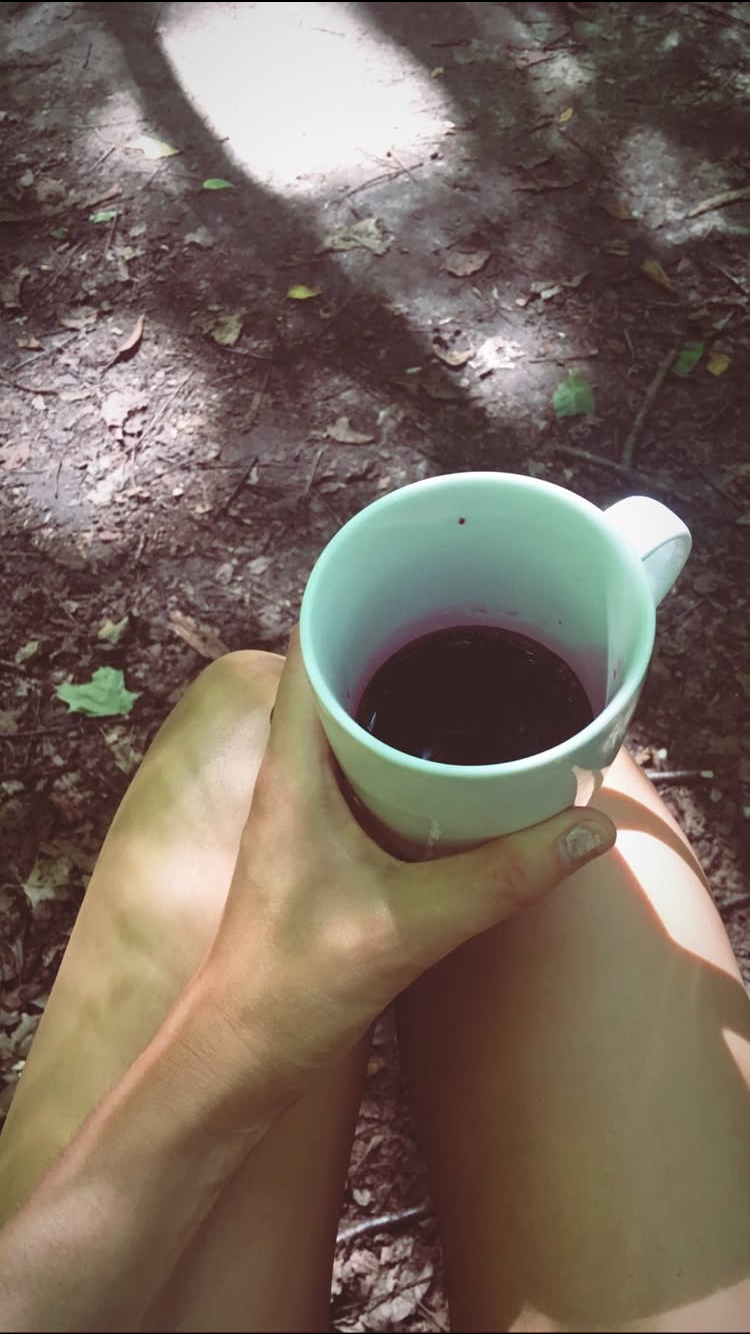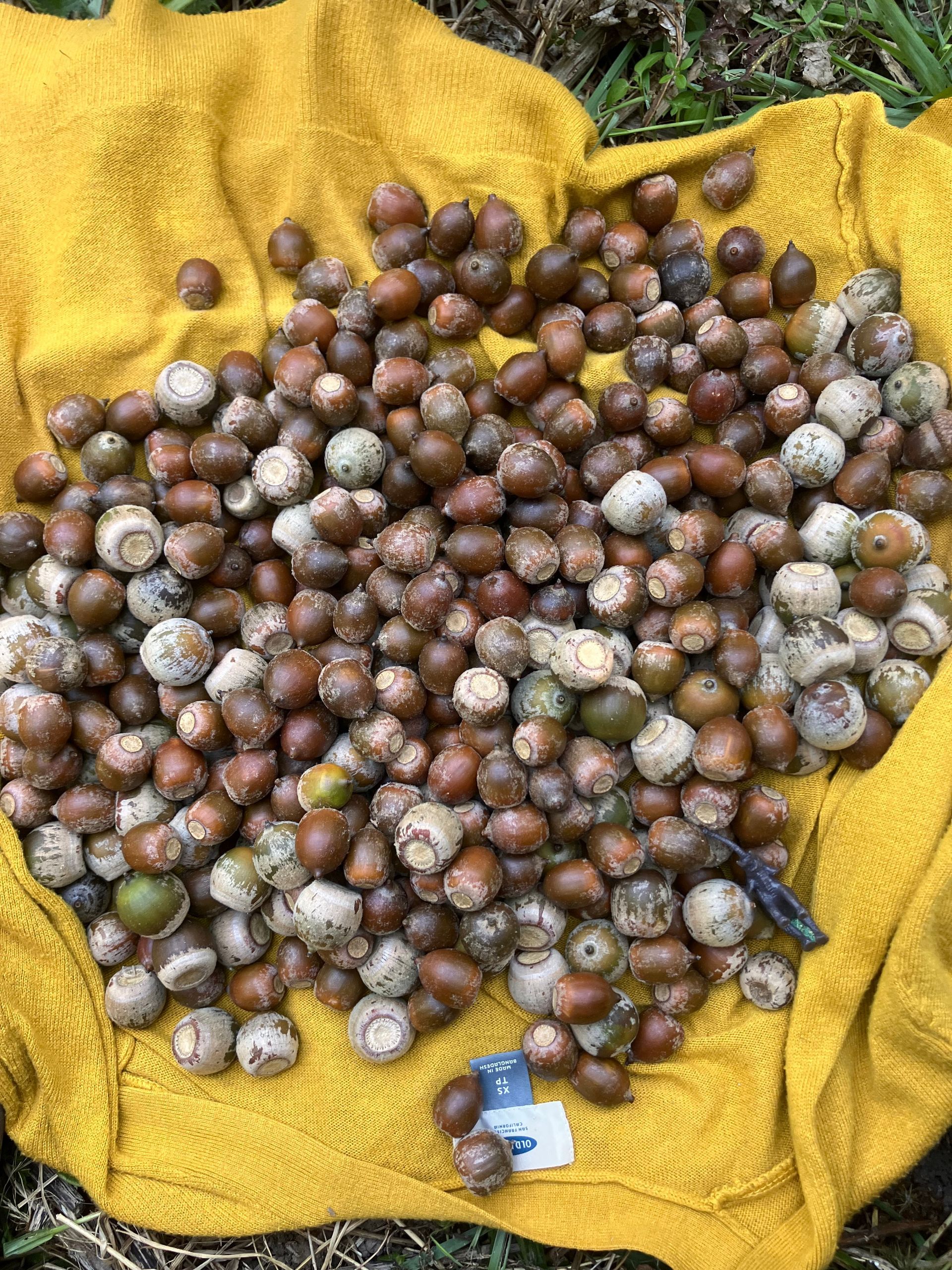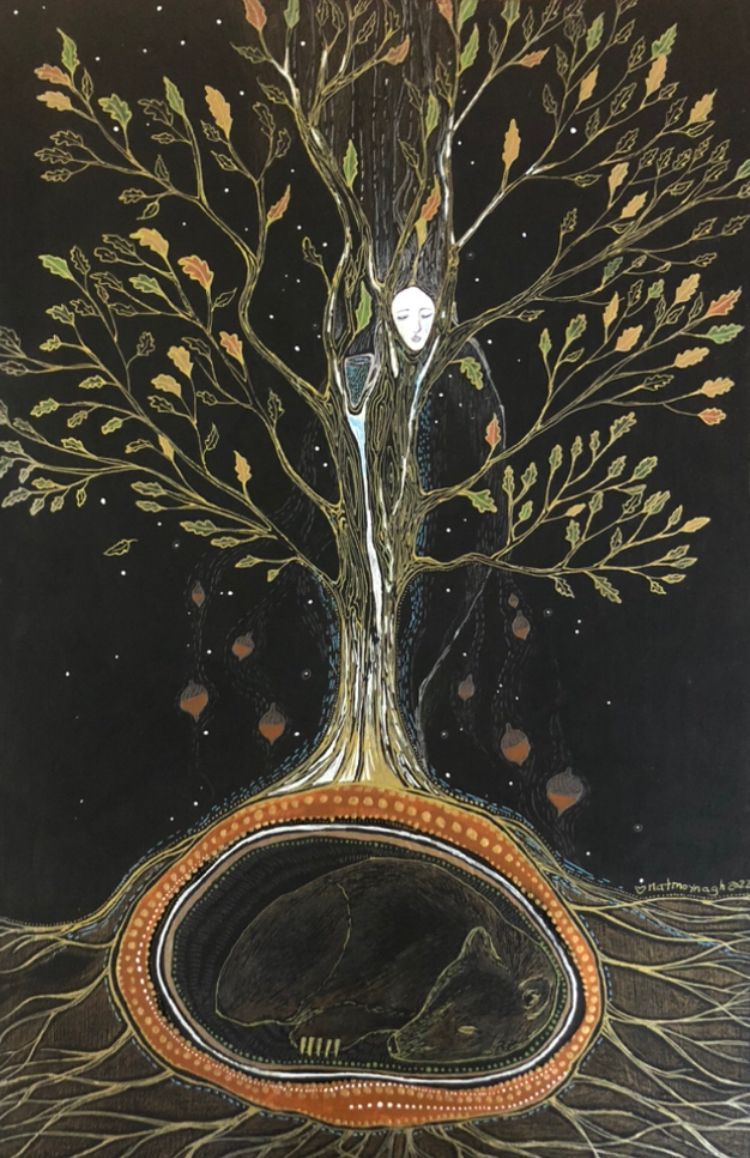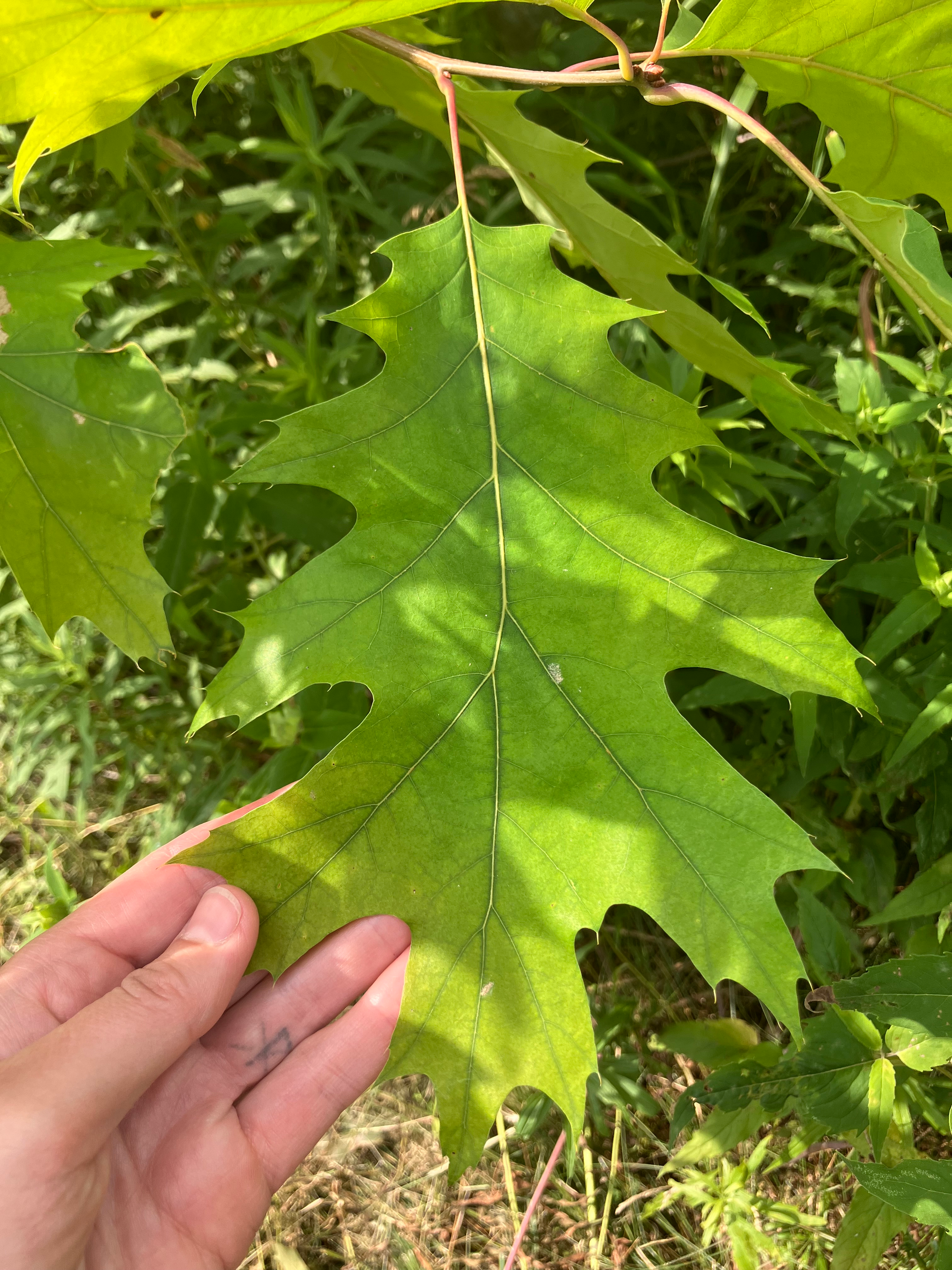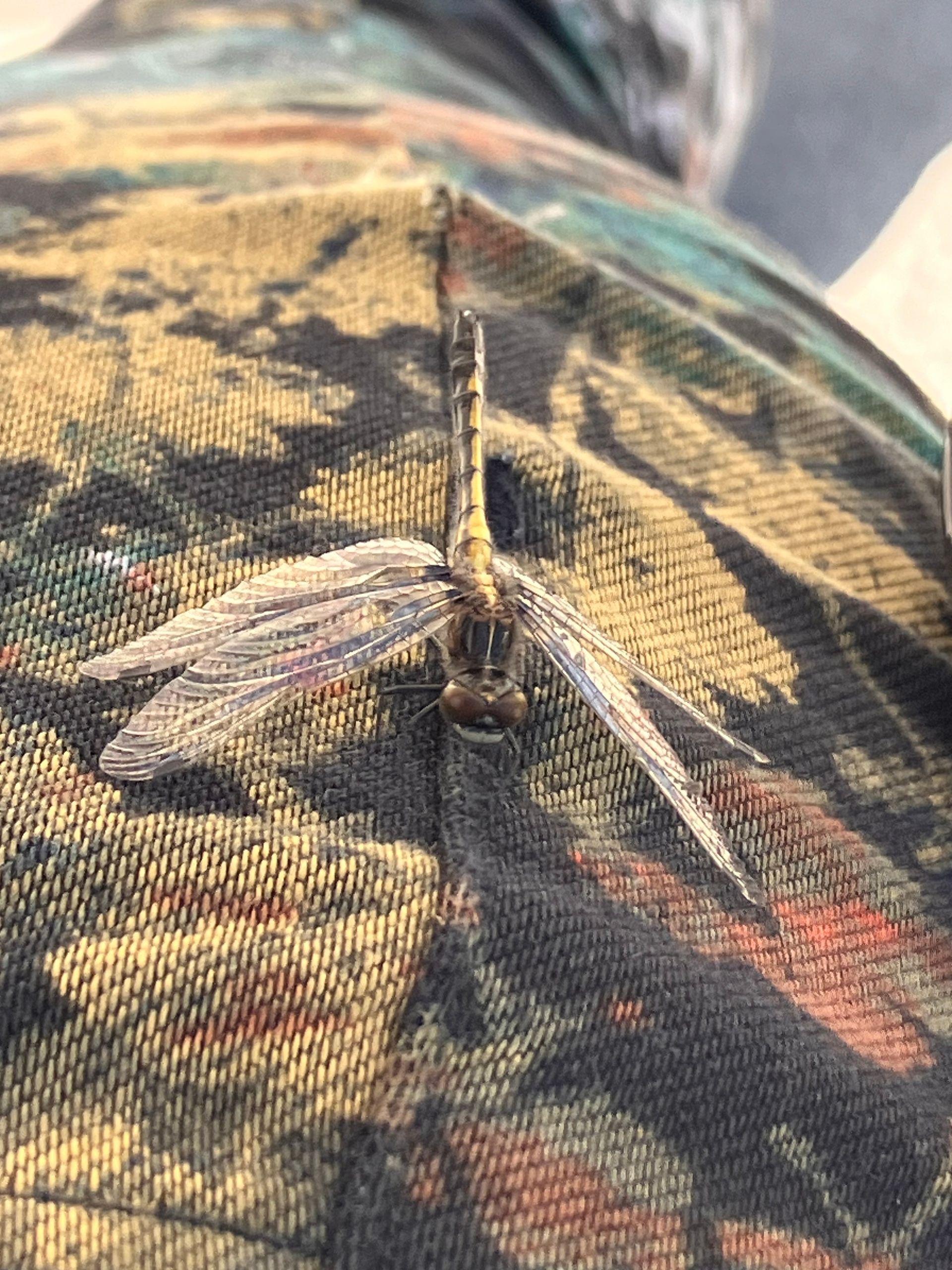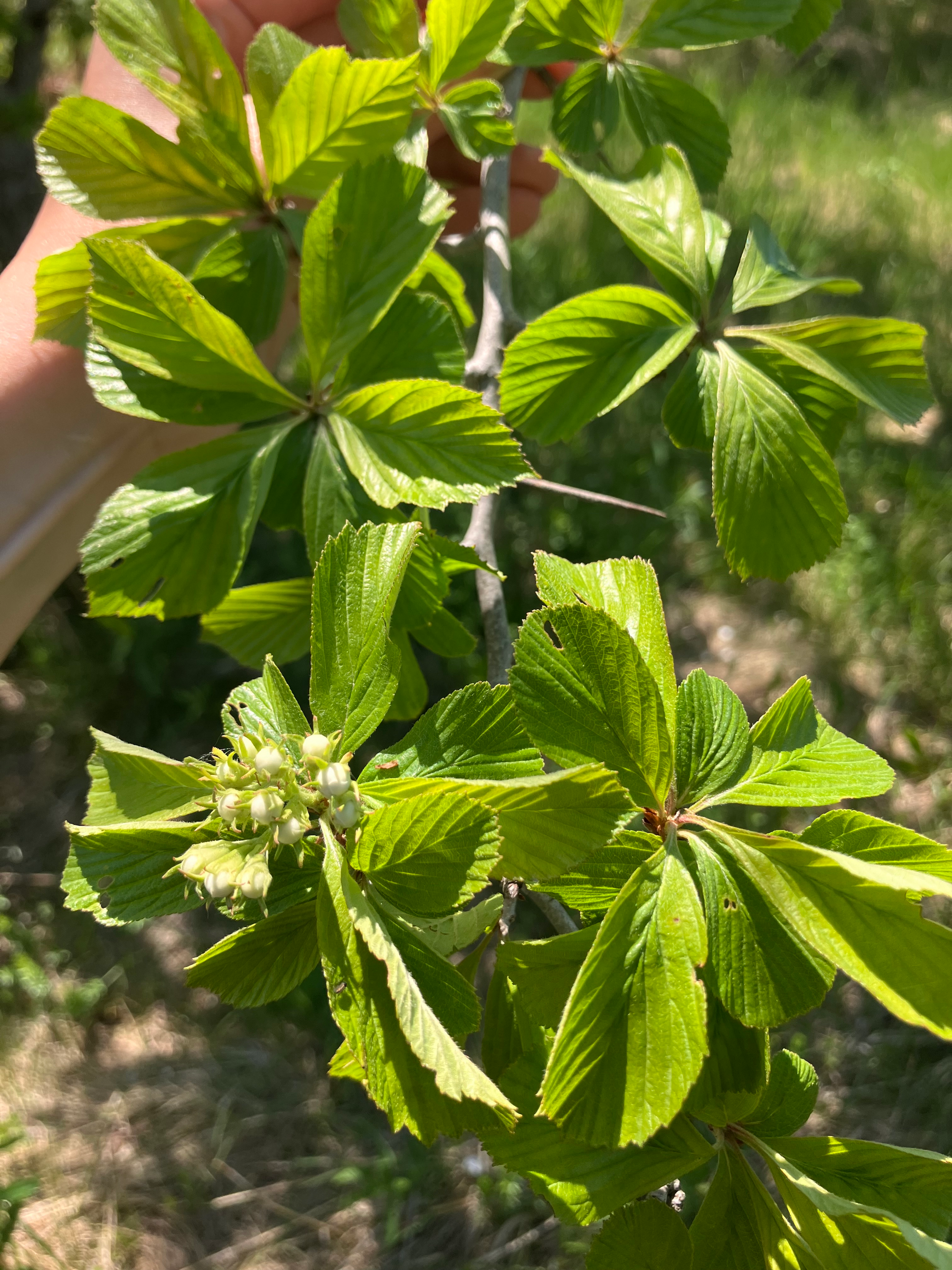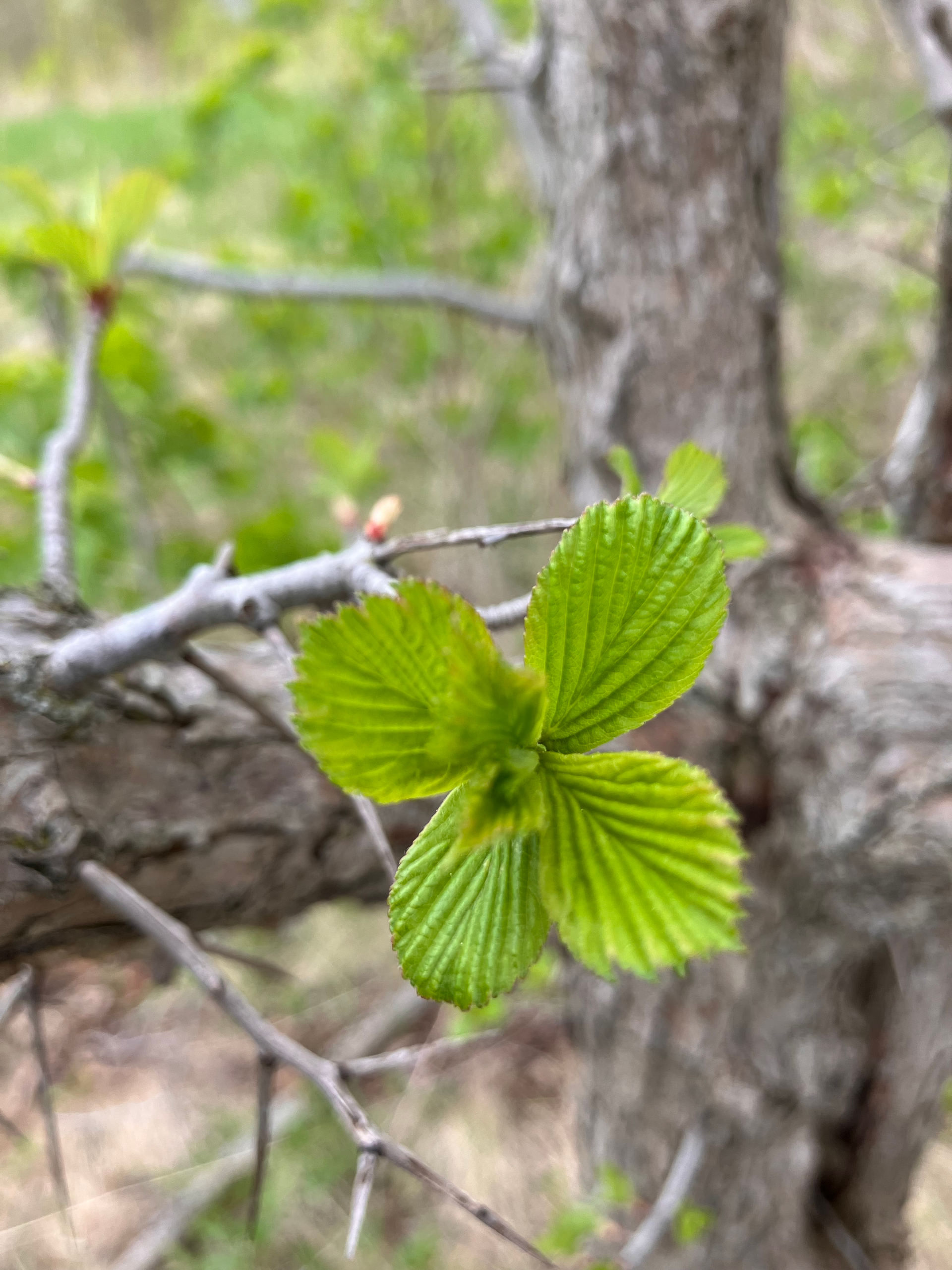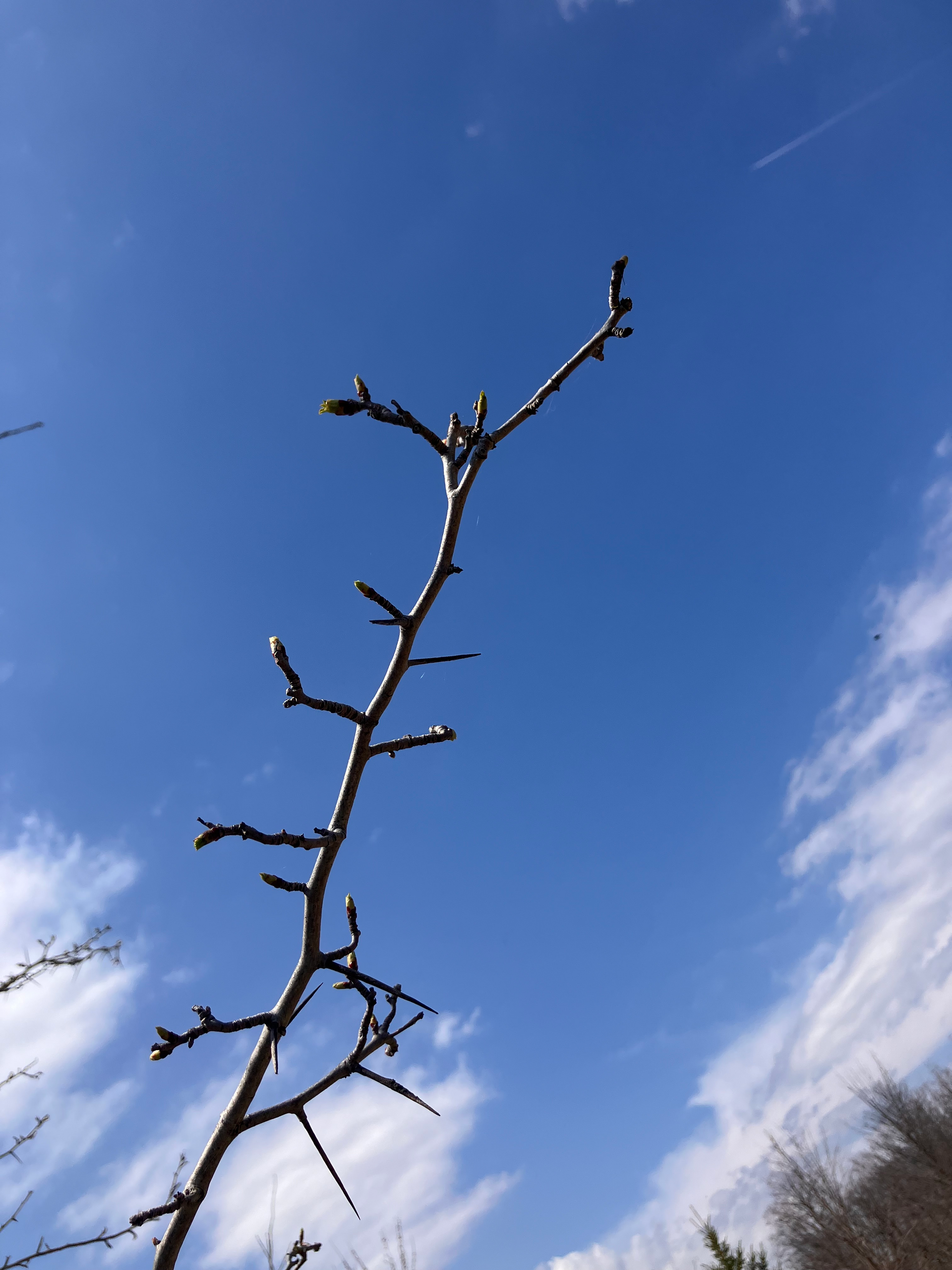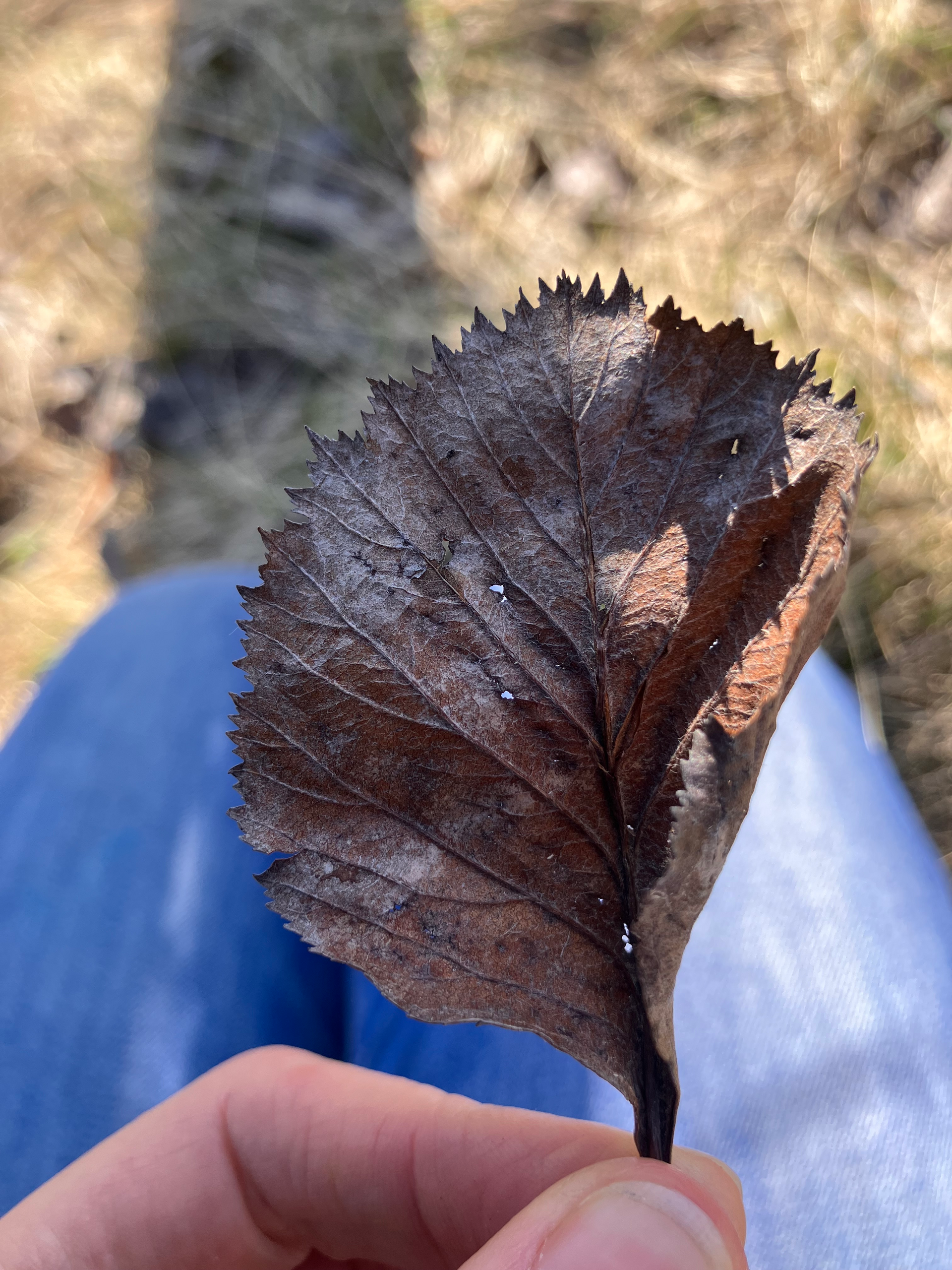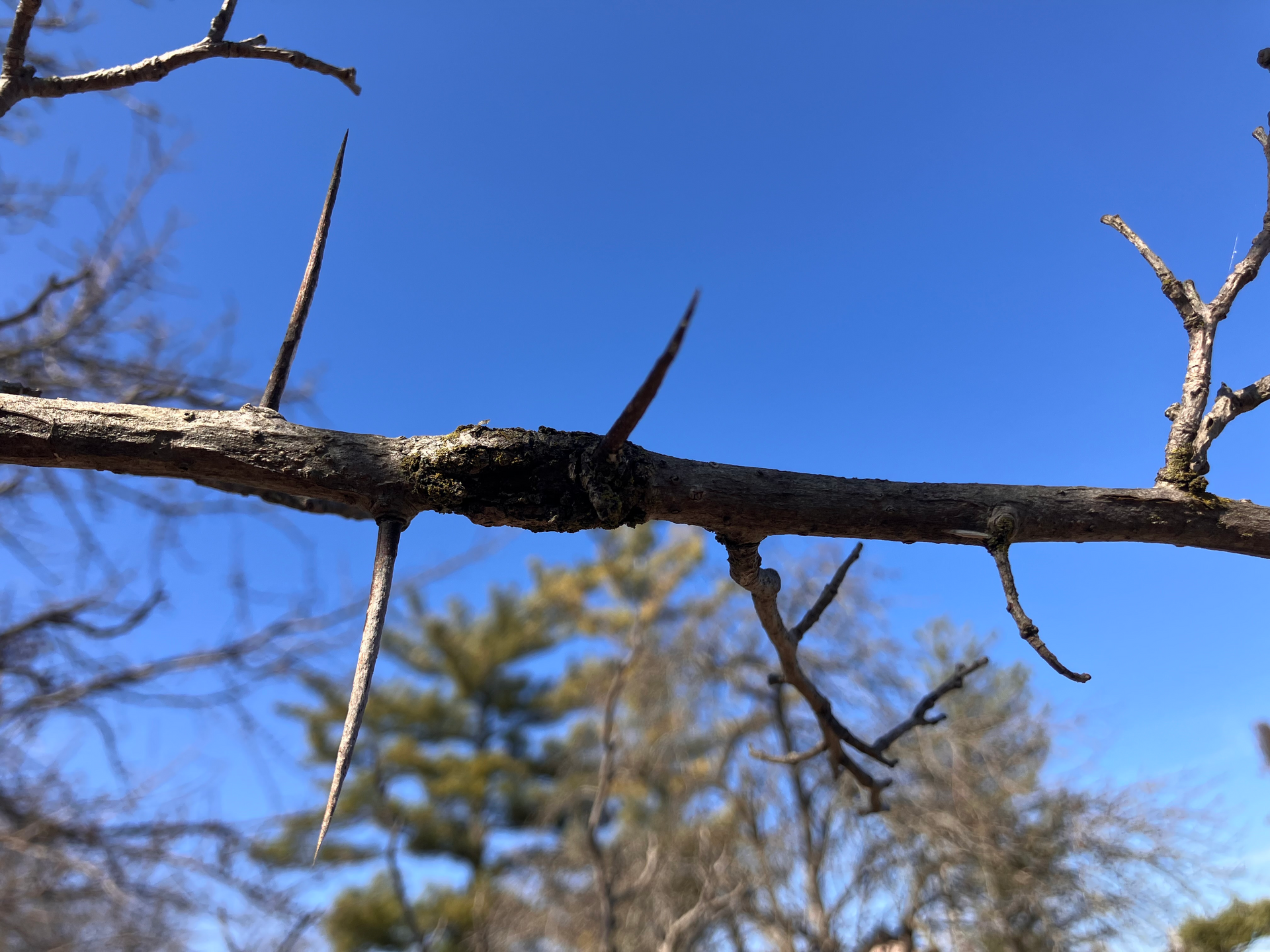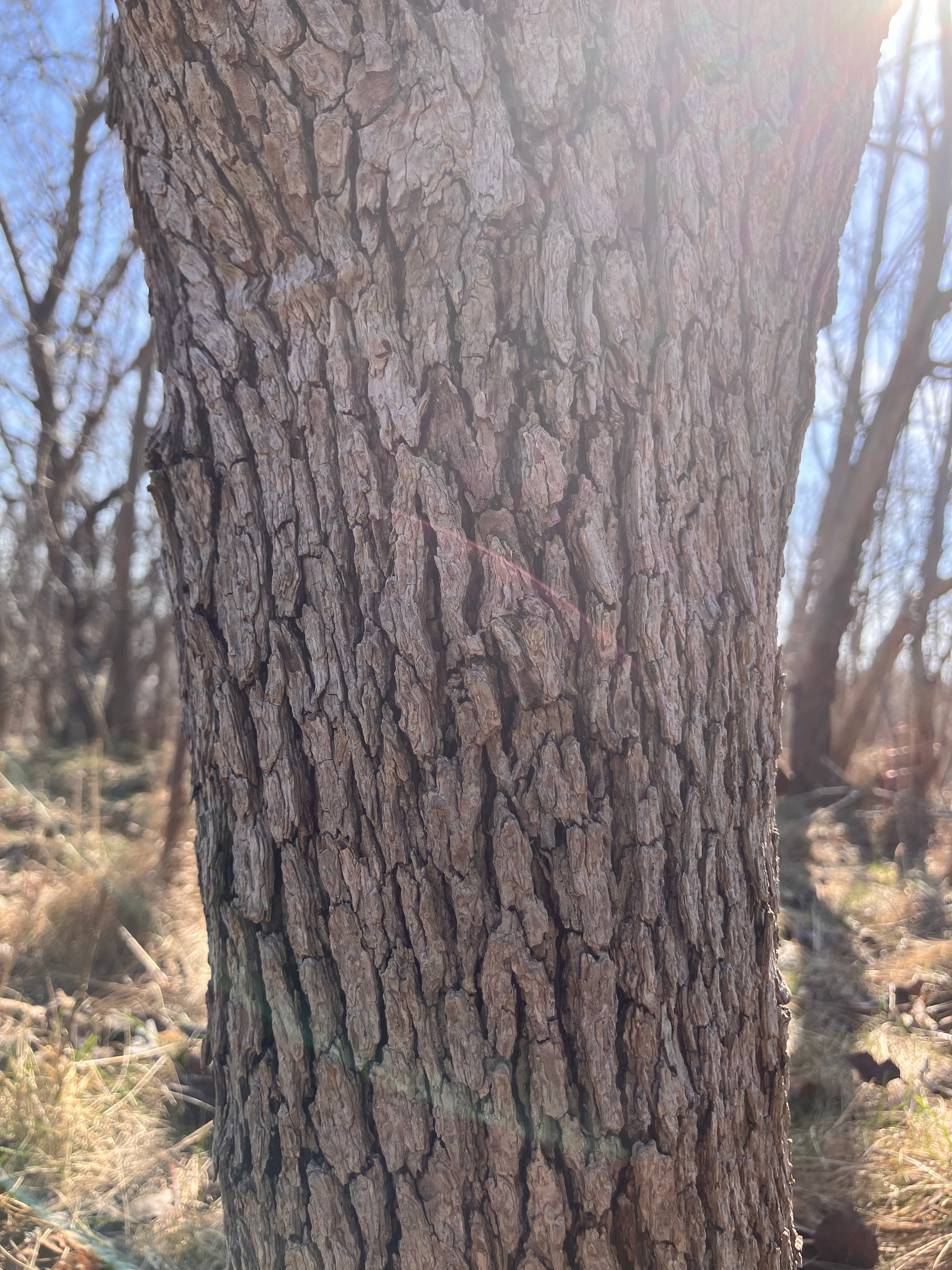Hawthorn. Miinensagaawanzh. Huathe. Les Aubépines.
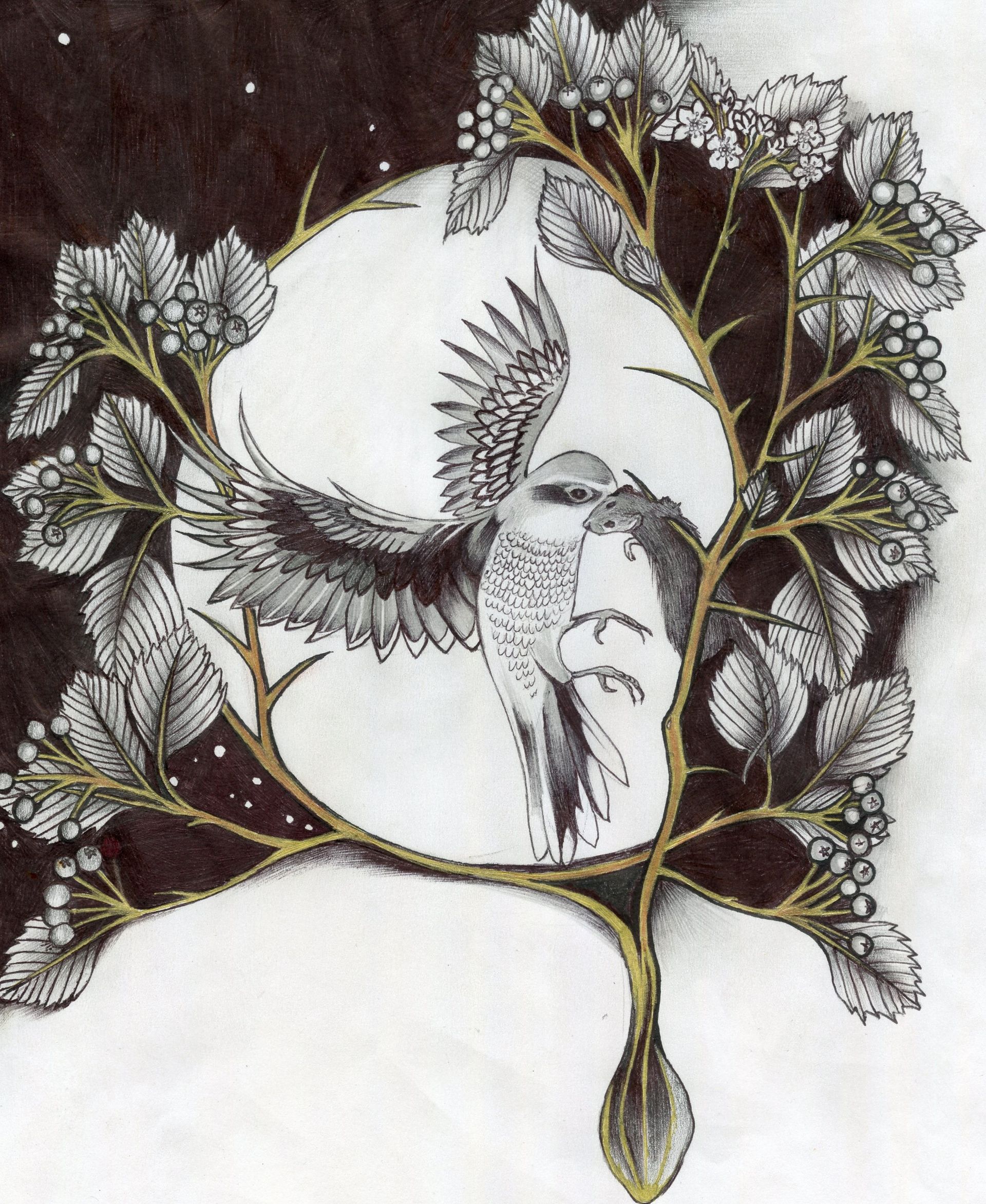
April 13th, 2025 Hawthorn journal studies.
I sat down by the river today to read about celtic tree magic. I had wanted to start diving into this research about a year ago but after completing one single "tree species journal" on Alders that my now partner (byron) had offered me as a framework back then for supporting my tree studies, I got kind of paralyzed and rebellious to the idea of giving myself homework. Since then I’ve realized that I am still in recovery mode from about a decade worth of post secondary education stress which has rendered me avoidant of anything that remotely resembles that kind of self-imposed torture (homework, deadlines, being graded, judged and treated as a mind expected to leave my body, spirit and life behind me as a student).
I can’t do that anymore so I am allowing myself a snails pace to accommodate a more integrated and meaningful life which illness has also supported me in cultivating lately. I thankfully am not alone in relating to modern day sickness as an involuntary protest to the fast paced culture of capitalism we are swimming in today, that I so detest. Slowing down is a complicated silver lining and maybe a radical act of rebellion which is also a strange sort of privilege at the same time. So that's what this process of studying the trees will also be, a slow meandering process.
Anyhow, I digress. When I finally picked the intention back up to reignite my tree studies I wanted to do so in line with the astrological new year. When the first book I leafed through “The Healing Power of Trees; Spiritual Journeys through the Celtic Tree Calendar” by Sharlyn Hidalgo indicated that the spring equinox corresponded with Hawthorns.... I was disappointed to find out through a quick google search that most folks actually agree that the month for Hawthorn is May 13th -June 9th. This makes way more sense when reading about it’s connection to Beltane which is traditionally celebrated on May 1st during which pagan folks decorate may crowns with hawthorn flowers etc. So, of course it makes sense that this is around the period of time in which the hawthorn flowers bloom. All to say there is some controversy about the exact timing of things with the tree lore. Some part of me wanted everything to line up perfectly and make sense but it's not that simple. Maybe the tree months bleed into each other, there's an imperfect weaving rather than clearly defined rigid rules or lines. Such is nature I suppose, which comforts me.
So having decided that book was a bit rubbish to begin my studies, I brought a new book borrowed from the library (Celtic Tree Magic; Ogham Lore and Druid Mysteries by Danu Forest) to Woolner Trail. I laid out a blanket to sit on at the top of a hill across from the so called “Grand River” first named by I think the Mississaugas of the Credit as Oeskinnegunning (pronounced O-es-shin-ne-gun-ing) which means "the one that washes the timber down and drives away the grass reeds". Also named by Mohawks as 'O:se Kenhionhata:tie meaning "Willow River" due to all the willows that live by the waters edge. This feels important to give voice to given the urgency to preserve Indigenous languages as outlined in the 94 calls to action when it comes to truth and reconciliation. Also I personally favour a language which sees the river as a being that is alive and just as worthy of having rights, care and protection as we are.
Instead of immediately pulling out the book though, I decide to just lay down and take in the stillness around me. Looking up at the blue sky, welcoming the warmth of the sun and the sound of the red wing black birds, chickadees, grackles and robins. As I look up I also notice all of these branches with long thorns which look suspiciously like Hawthorns! Sometimes I’m kind of amazed when things like this happen, of course the tree I am studying just so happens to be the tree I casually (maybe intuitively) decide to sit beneath. I am new to tree identification and have only once confirmed having met one before so I verify with the i-naturalist app, a few tree id field guides and byron who knows them better than me. I take a few pics, a few thorns home and study the dead leaves I find on the ground around me.
Back to the confusing topic of retrieving accurate knowledge about the tree lore. I have also seen reference to the sea, ivy, reeds and groves lumped into the Ogham (pronounced Owum) calendar. I hope to find some clarity around this as I dig deeper. Do folks just learn some things and then add their own spin on things? Does this make things less authentic? More meaningful, less meaningful? More modern? More personal? Less authentic? Who gets to decide these things? Does it matter? I don't know, I guess I kind of also want to drop some things and add others. To make the past more relevant to the future that I want to grow.
Something else I find strange is that a lot of the animal associations linked with the trees come from legends, tales and myths belonging to celtic spirituality rather than the animals, birds, insects themselves that are actually in relationship with the trees in real life. This feels disjointed to me. Having lost my direct connection with those who know the tales well, most likely to the patriarchy/empire/colonialism, due to the witch hunts and stamping out more matriarchal and earth based practices, knowledge and power etc. I would have personally preferred the tales be teaching us something about who is actually linked to the trees through relationship in these stories and who knows, maybe there will be. I've only just begun this journey.
I suppose for me, in order to locate myself within his/her-story I am also looking for the facts and not just the stories we tell that involve the trees. Who is visiting, who eats the berries, what mushrooms grow from the dead stumps, who’s showing up around them, what’s blooming or happening at the same time. Otherwise, I will mostly speak to the stories that seem to fit or make sense, associations that are related to the qualities of the tree or in connection to the season in which the tree blossoms or something of the like.
Side note: if you’re reading this and have deeper connection to or knowledge of the trees, to the stories or myths, if you see some error in my logic, have some constructive feedback, a link of interest, deeper insight or some sort of mercurial meandering to note, please feel free to e-mail me (natmoynagh@gmail.com) with whatever msg you have to broaden my scope and deepen my relationship with these beings and all of those interconnected. I very much invite and appreciate it.
Another thing I’ve noticed reading up on the lore of hawthorns which is more disturbing than strange and not surprising is that a lot of the stories connected to Hawthorns revolve around this old archaic idea of winning women over as prizes or objects which isn’t really something I want to pass on to my descendants. I personally would rather weed out those kind of myths that encourage out-dated patriarchal ways of being. Also they're all pretty hetero-normative which is annoying and renders them unrelatable to a lot of folks.
One story that did resonate and lingers with me still which I think serves as a kind of bridge out of the patriarchal lens is the story of Sovereignty referenced both in the “Celtic Tree Magic; Ogham Lore and Druid Mysteries” book and also shared by Sharon Blackie in “If Women Rose Rooted” where I first heard it last summer. As someone who is still trying to pinpoint and detox the ills of patriarchy from my body and mind this story has found a resting place in my heart as a turning point. From what I understand this story is connected to Hawthorns because they are associated with Sovereignty and this idea of belonging to oneself but this to me does not mean chastity. They are also associated with love due to the berries they yield containing medicinal properties good for heart health. Their long sharp thorns symbolic of having and holding good boundaries as well.
Pagans associated hawthorns with fertility and sexuality (tied to the lusty month of may) long before Christianity decided to twist the significance of the white blossoms into representing chastity and the virgin mary... probably an agenda at play there but here is the story of Sovereignty as told by Sharon Blackie in "If Women Rose Rooted" which I think more accurately describes the pagans symbolic understanding of the hawthorns and of sovereignty.
The story though I will just say is still very much steeped in themes of patriarchy but it is a turning point, one which started a long time ago and still has a long long way to go.
What Do Women Want
(Exert by: Sharon Blackie)
One day King Arthur was hunting in the forest with his men when a deer briefly stepped into view and then just as suddenly vanished into a tangle of trees. 'Stay here everyone', said Arthur, 'I'll stalk this one myself'. With his bow in one hand and his arrows slung over his shoulder, the king crept after the deer until, deep into the forest, he slew it finally with a single shot. But as the animal fell, a tall figure, all dressed in black, well-armed and strong, stepped from the shadows and stood in front of Arthur.
'How fortunate for me that we meet this way, with your arrow already released from your hand' a deep voice boomed. 'Arthur, once you did me a great wrong by giving my lands to your nephew, Gawain. Now I will repay you with death.'
Thinking quickly, Arthur said, 'To slay me here, armed as you are and I clothed only in my hunting greens, would bring you no honour. Shame will forever follow you. I'll grant you anything- name it- land or gold, to spare my life.'
The Black Knight nodded, slowly. 'There is no land or gold that i desire', he said, 'and so I'll give you the chance to solve a riddle. One year and a day from now, you must come to me here in the woods, without friends and without weapons. If at that time you're unable to solve this riddle, no man will object if I take your life. But if you answer the riddle correctly, you may go free.'
'I agree' said Arthur hastily. 'And what is the riddle?'
'You must tell me what it is that women desire most, above all else.'
Arthur frowned, but then nodded, and gave his word of honour that he would return as asked, a year and a day later. And so the Black night slipped back into the trees and was gone. Arthur blew his bugle, and his hunting companions soon found him with the slain deer at his feet; they returned at once to Camelot. But Arthur shared what had taken place only with his friends and nephew, Gawain.
'Sir, don't worry', said the young knight after he heard the story, 'let's ready both your horse and mine. I will go in one direction and you the other, and so we will ride into every town in the country. Wherever we go, we will ask each of the women we meet for the answer to this riddle, and we'll go on until we find the response which seems to be correct.'
And so the king and Gawain rode away. Everywhere they went, they asked what it was women desired above all else. All the women who answered were certain that their answer was the only true response, and yet each answer was different. Some said that women loved to be well clothed; others said they wanted never to be scorned. Some said women wanted a husband who was handsome and strong; others that they wanted a man who would never try to prove them wrong. And so Arthur and Gawain collected many an answer......yet neither of them found one that rang true. Soon only a month remained, and they each turned back to Camelot, downhearted.
As he rode through the forest not far from the castle, Arthur met a woman. Though she was clothed in gold and wore precious stones, she was as foul a creature as ever a man saw. Her face was red and covered with snot, her mouth huge, and all her teeth yellow, hanging over her lips. Her eyes were bleary and protruded, each larger than a ball, and her cheeks were as broad as women’s hips. She had a lump on her back, her neck was long and thick, and her hair was clotted into a heap. She was built like a barrel, with shoulders a yard wide and enormous hanging breasts.
The lady stepped alongside Arthur as he stared. ‘Godspeed, King Arthur,’ she said. ‘You may speak with me or ride on, but either way, your life is in my hands.’
‘What do you mean lady?’ asked the king. ‘What business have you with me?’
‘I know of your quest,’ she said,’ and all the answers you’ve been told, I know that none of them will help you. Only I know the correct answer. Grant me just one thing and I’ll tell it to you - or else you’ll lose your head.’
‘What is it that you want?’ said Arthur. ‘If I can, I shall grant it.’
‘You must grant me a certain knight to wed. His name is Gawain. Either I marry him or you will meet your death here in the forest in a month’s time.’
Alas, Arthur thought to himself. What a terrible thing that I should be the cause of Gawain marrying such a creature! He said aloud ‘I cannot promise that Gawain will marry you; he alone can decide. But in order to save my life, I will do what I can. And so for now we must part, lady. But tell me, before I go, what is your name?’
‘I am the Lady Ragnelle,’ said the loathsome hag.
Arthur returned to Camelot, where the first man he met was his nephew. Arthur told Gawain everything except the request of the loathsome lady to wed him, saying simply that the Lady Ragnelle would only share her secret in return for the promise of a husband.
‘Is that all?’ said Gawain. ‘I’ll wed her, and would even if she were a fiend, otherwise I would not be your friend and kinsman. You are my king, and have honoured me in many a battle; I will not hesitate.’
And so, a few days later, Arthur rode out of town, and returned to the spot where he had met Lady Ragnelle. He told her that Gawain had agreed to marry her. ‘So tell me now, and quickly my lady, the answer to the riddle.’
‘Sir, you now know, without further digression, what women most want,’ Lady Ragnelle responded. ‘It is a simple enough answer: the one thing that we desire above all else is to have Sovereignty. So go on your way and tell this to the Black Knight, who will for certain be angry and curse the one who taught it to you, for all his labour is lost. I assure you that your life is now safe, and ask you to remember your promise.’
Arthur rode on as fast as he could, alone and unarmed, to the place where he had met the Black Knight a year and a day before. There, he found him, waiting. The king began by offering an answer that he had been given by one of the women he’d encountered around the country.... and then another, and yet another. And after each answer the knight shook his head with glee.
‘No, no,’ he said. ‘Obviously you have no idea. You are as good as dead. Prepare to bleed!’
‘Wait a minute,’ Arthur said. ‘I have one answer left to offer you.’
‘Very well then,’ said the Black Knight, ‘but know this: after that answer, there’ll be nothing left to you but your death.’
‘Here is the answer,’ said Arthur,’ and there will be no death. For above all women desire Sovereignty.’
‘And who was it that told you this?’ roared the Black Knight. ‘No doubt it was my sister, the Lady Ragnelle! May she burn alive on the hottest of fires! Yet now I am compelled to release you- so go, before I change my mind and break my word!’
Arthur quickly turned around his horse, and sped back to the Lady Ragnelle to bring her back to Camelot for the wedding. So unpleasant was the prospect of holding a public wedding with such a bride that he told her the ceremony would be an early morning affair, knowing this meant that there would be few or none to attend. But Lady Ragnelle would not agree to this.
‘No,’ said she firmly. ‘I must be wed openly, with a full wedding feast and plenty of guests in attendance.’
When finally they met, Lady Ragnelle carefully watched Gawain, her future husband. Was he disgusted by her? Would he turn his back on her and ignore her? Strangely, he did none of these things. Gawain behaved as if he cherished his loathsome bride. And so they were married, with great ceremony, and in a hall filled with guests. The queen and her ladies wept for Gawain, and the king and his knights mourned, for the Lady Ragnelle was so ugly. She had two long teeth on each side like boar tusks: one grew upwards, the other down. Her wide, foul mouth was covered with grey hairs and her lips lay lumped on her chin. But all the while, Gawain treated her with great affection, courtesy and respect.
After the wedding came the wedding feast. Lady Ragnelle sat at the head of the high table, and everyone gasped at her bad manners. When served, she ate as much as six people might. She used her nails, which were three inches long, to break up her food. She ate and ate; nothing came before her that she didn’t eat.. And so she ate until the meal was done.
Later that night, as they arrived in their bed chamber, the Lady Ragnelle turned to her husband, and said ‘Sir Gawain, now that we are married, show me your love with a kiss. If I were fair, you would not delay. But even though I am not, I pray you do this at my request, and with all due speed.’
Gawain said courteously, Indeed my Lady, I will at once, that and more! But as he turned to kiss his bride, standing there before him was not the appalling creature he had married, but the fairest woman he had ever seen.
‘Oh,’ he cried out. ‘What are you? A witch?’
‘I am your wife,’ she said. ‘That is all.’
‘Ah lady, then I must not be in my right mind,’ said Gawain.
‘Earlier today you were the foulest sight that I ever saw - pardon me for saying so - and now, I cannot believe my good fortune!’ And he kissed her with great joy.
‘Sir,’ said she, pulling away for a moment, ‘there is more you must know. Several years ago I was deformed by an enchantment caused by my brother, the terrible Black Knight. He put this spell on me because I would not give him my treasure, and my land. And because of this curse my beauty, as you see it now, will not hold. You need to choose whether you will have me fair by night and foul by day, or else have me fair by day and foul by night. With the enchantment, it cannot be both. What do you choose?’
‘Alas!’ said Gawain. ‘The choice is hard. ‘To have you fair by nights and no more, that would grieve my heart right sore. And if I desire by days to have you fair, then nights I’m sure I could not bear. So I must put the choice in your own hands. Whatever you choose - well then as your husband, that choice will also be my own, and I will be glad of it.’
‘Oh, most honourable and compassionate of all knights!’ cried Lady Ragnelle. ‘Now the enchantment is released completely!
You shall have me fair both by day and night. For the only thing that could release me from this evil curse was the granting to me by my husband, and of his own free will, the Sovereignty, that which is mine by nature. And now, courteous Gawain, you have done just that. You have granted me Sovereignty, that which every woman wants above all else. Kiss me, and be glad!’
And so it was that the Lady Ragnelle remained beautiful all day and all night, and she and Gawain lived happily together thereafter.
